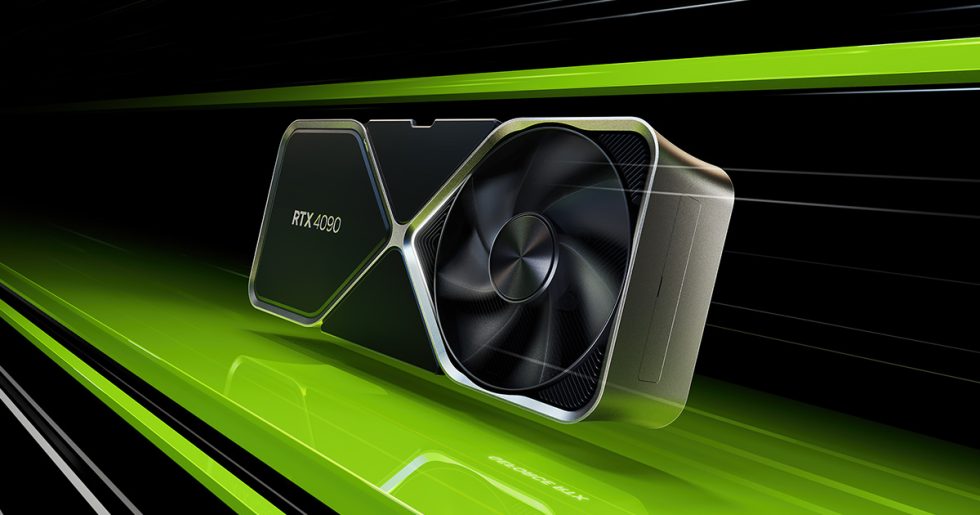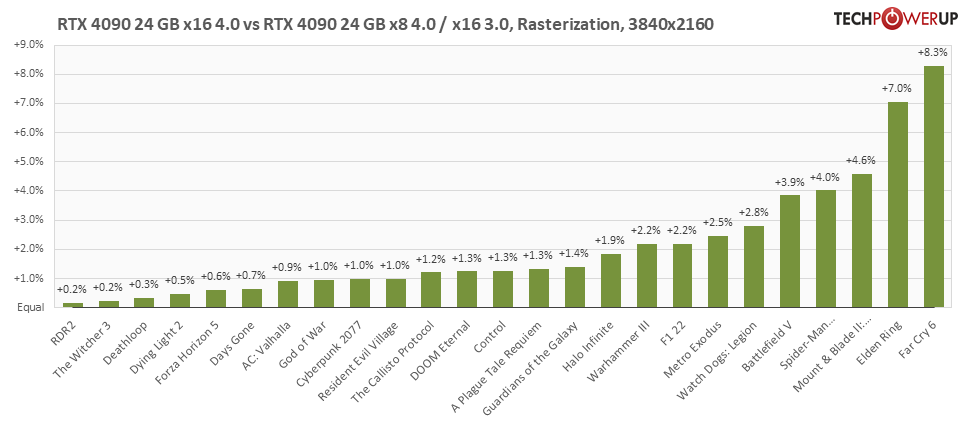PCI Express (PCIe) is the standard interface for connecting devices within a computer, and the fourth generation of this standard, PCIe Gen4, offers significantly faster speeds and much greater bandwidth than previous versions. The specifications “x16” and “x8” refer to the number of data channels a specific PCIe slot has. The Chinese brand Moore Threads is the only company with a PCi Gen5 compatible GPU: neither AMD nor Intel and NVIDIA are rushing to this standard, probably for good reason.

Such a PCIe Gen4 x16 slot has 16 data channels, while a PCIe Gen4 x8 slot (logically) has 8 data channels. The difference in the number of lanes means on paper that x16 slots can offer twice as much bandwidth as x8 slots. That is the gray theory, but in reality such a difference does not always show up in actual game tests. This is exactly what was demonstrated by TechPowerUp, who updated their PCIe scaling test with the newer hardware. Instead of the Ryzen 7000 system that was used months ago, it is now based on an Intel Core i9-13900K CPU. This system will be used for their GPU tests from now on.
Additionally, TPU has taken community feedback into account to include newer titles with ray tracing enabled to ensure bandwidth usage is at the highest possible level.
As expected, the results show a small difference between the Gen4 x16 and x8 modes. The latter also corresponds to the x16 lane in PCIe Gen3, which shows that gamers should not expect any major performance losses even with an older version of the standard. TPU’s game selection has been updated with newer titles, such as Elden Ring or Far Cry 6. These games have shown the most significant differences between x16/x8 modes, up to 8.3%:


The power loss is more pronounced in x4 mode, with a power reduction of 6% to 7%. However, the biggest impact should be expected from the x4 mode, which corresponds to the Thunderbolt 80 Gbps port used by external GPUs. Players should expect a performance loss of 17% to 21% here. While the PCIe standard can indeed have an impact on performance, this is more likely to be seen in mobile graphics cards, where the number of lanes has been reduced from 8 to 4, than in desktop GPUs, which lose half of the lanes. This scenario is tested in this review based on the Z790 motherboard, which would sacrifice half of the available CPU PCIe lanes (Gen5 in this case) for NVMe storage.
Source: TechPowerUP































12 Antworten
Kommentar
Lade neue Kommentare
Urgestein
Urgestein
Mitglied
Mitglied
Urgestein
Urgestein
Mitglied
Urgestein
Mitglied
Urgestein
Mitglied
Urgestein
Alle Kommentare lesen unter igor´sLAB Community →